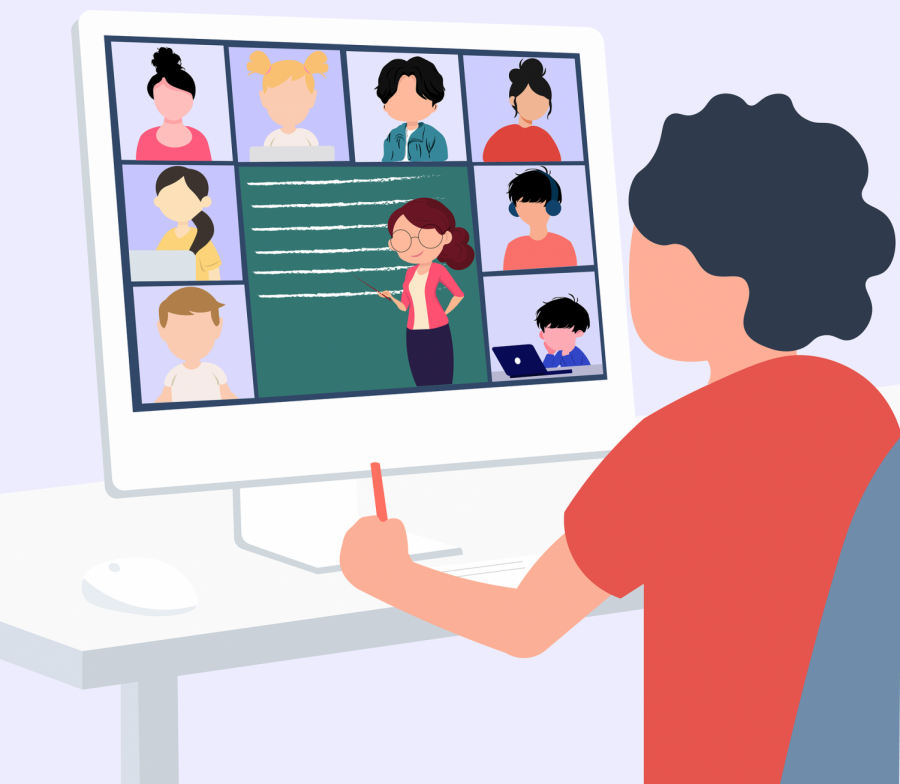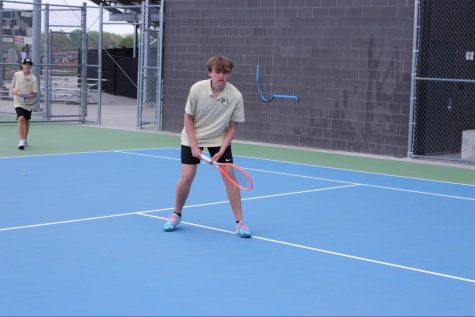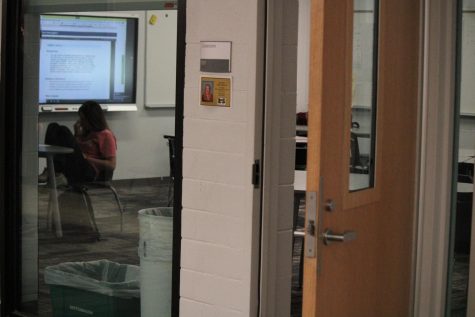Adapting to Online Learning
Navigating through the uncharted territory of virtual schooling has proven to be more than difficult.
October 6, 2023
This school year, students and staff have had to adjust to a new reality. At the beginning of the school year, some students were feeling overwhelmed. Teachers were assigning too much work and not enough time.
“I got several hours of work, but the only time I had to complete it was after school. It was a pain, especially since I had Marching Band as well,” freshman Kaylei Stahl-Winch said.
As the school enters into round two of online learning teachers, have been working hard to create lesson plans that are simple and educational.
“I want students to focus on the most important concepts of the course so they are gaining the knowledge but not feeling overwhelmed in the virtual world,” math teacher Lauren Vogt said.
Teachers have had to adapt and make drastic changes to help students learn the material.
“There are some things that are good for students to know when in person, but are very hard to teach virtually,” Vogt said. “We are keeping track of those things so we can incorporate them later in the year or in future classes.”
Students have recognized the efforts made by the teachers to make online learning as organized and easy as possible.
“The teachers have mainly adapted well to online learning. They don’t like it, but they still create good lessons most of the time. Most of my teachers are organized, and help us know exactly how and when to complete assignments,” Stahl-Winch said.
While Google Meets and surveys can be annoying or time-consuming, teachers use it as a way to reach out to their students. This helps them create the best learning environment for students.
“I try to check in as often as possible while still holding students to reasonable expectations and providing some structure. I have also tried to spread out the content a little more so there is time to process and get feedback from me. The feedback takes more time, so I have to give more time as well,” Vogt said. “I also have surveyed my students to gain insight on what things are working and not working.”
The future is filled with uncertainty. If online schooling continues, students need to communicate with teachers.
“I would recommend the teachers still keep in touch. Not a Google Meet every day, but at least once a week. I also think it would help encourage students to come to Google Meets or to do classwork if there were some fun activities like Kahoots as well as enjoyable lessons,” Stahl-Winch said.
Many are struggling with virtual schooling. To get through these challenging times students and staff need to have understanding and patience.
“I try to reflect daily on ways to help my students through the virtual learning experience. It is so hard for students and teachers. I want students to learn and feel a sense of purpose while still maintaining their mental health. That is hard to do in the middle of a pandemic, but we are all trying our best,” Vogt said.
Moving forward, staff have modified their plans based on students’ needs. The school is constantly growing and modifying. The COVID experience has taught numerous students and teachers how to adapt and potentially prepared many for future challenges.












